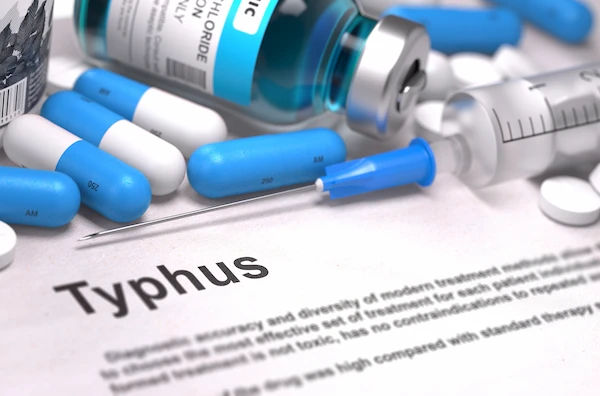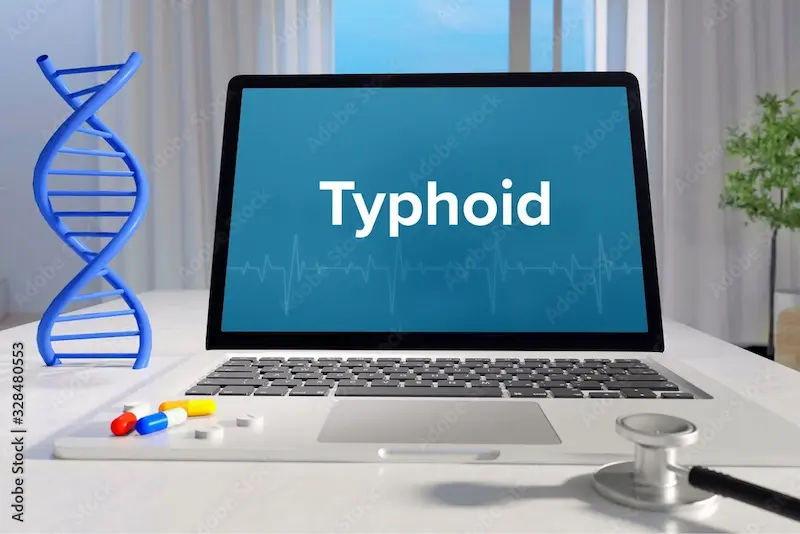Guide to High Temperatures Shivers And Sweating: Pyrexia Demystified
Demystify pyrexia and understand the causes of high temperatures, shivers, and sweating. Learn how to manage symptoms and when to seek medical advice in our comprehensive guide.


High Temperatures, Shivers, and Sweating: Your Guide to Understanding Fever
Introduction
That sudden wave of coldness, the uncontrollable chattering of teeth, followed by a drenching sweat—it’s a familiar yet unsettling experience for many. High temperatures, shivers, and sweating are not illnesses in themselves; they are powerful signals from your body that it's fighting something off. This trio of symptoms, medically known as pyrexia, is your immune system’s frontline response. But what exactly is happening inside you? Is shivering a bad sign? Does sweating mean the fever is breaking? This guide demystifies pyrexia, explaining the science behind these symptoms, their common causes, and practical steps you can take to feel better. We’ll also equip you with the knowledge to identify when it’s time to seek professional medical help, ensuring you can navigate this common health concern with confidence.
What is a Fever? More Than Just a Number
A fever is defined as a temporary increase in your body temperature, often due to an illness. It's a physiological response, not a disease. While the average normal body temperature is 98.6°F (37°C), a fever is generally considered to be a temperature of 100.4°F (38°C) or higher.
Your Body's Internal Thermostat: The Hypothalamus
Think of your hypothalamus, a region in your brain, as your body's sophisticated thermostat. It normally set your temperature to the ideal "98.6°F" setting. When you encounter an infection or illness, your immune system releases chemicals called pyrogens. These pyrogens travel to the brain and tell the hypothalamus to raise its set point. Your body is no longer trying to stay at 98.6°F; it's now working hard to reach a new, higher temperature because a hotter body helps your immune system work more efficiently against invading pathogens.
The Fever Spectrum: From LowGrade to High
Not all fevers are the same. They are often categorized:
Low grade fever: 100.4°F to 102.2°F (38°C to 39°C)
Highgrade fever: Above 102.2°F (39°C)
Hyperpyrexia: A very high fever, above 106°F (41.1°C), which is a medical emergency.
The height of the fever doesn't always correlate directly with the severity of the illness, especially in children.
Consult a General Physician for the best advice
The Shiver and Sweat Cycle: Why Your Body Does This
This cycle is the most visible part of a fever and is often misunderstood.
The Science of the Shiver: Generating Heat
When your hypothalamus raises its temperature set point, your current temperature of 98.6°F suddenly feels too cold. To bridge this gap and reach the new, higher target, your body initiates heat-producing activities. You feel intensely cold and begin to shiver. Shivering is essentially your muscles contracting and relaxing rapidly—a biological mechanism to generate heat rapidly. This is why you reach for a blanket even though your core temperature is rising.
The Purpose of the Sweat: Cooling Down
Once the underlying infection begins to be controlled, or if you take a feverreducing medication like acetaminophen, the hypothalamus resets its thermostat back to normal. Now, your body temperature of, say, 101°F is too high compared to the new 98.6°F set point. To cool down, your body initiates cooling mechanisms. The most effective one is sweating. As sweat evaporates from your skin, it carries heat away, helping to lower your temperature back to the normal range. This is often referred to as the fever "breaking."
Common Culprits: What's Causing Your Fever?
Understanding the cause is key to effective treatment. The vast majority of fevers are caused by common infections.
Infections: The Usual Suspects (Viral vs. Bacterial)
Viral Infections: The most common cause. Includes influenza (the flu), the common cold, COVID19, RSV, and gastroenteritis ("stomach flu"). These typically must run their course.
Bacterial Infections: These can be more serious and often require antibiotic treatment. Examples include strep throat, urinary tract infections (UTIs), pneumonia, and certain ear infections.
Beyond Infections: Inflammatory and Other Causes
Inflammatory Conditions: Autoimmune diseases like rheumatoid arthritis or lupus can cause fevers.
Heat Exhaustion or Heat Stroke: A dangerous spike in body temperature due to external heat and dehydration.
Medications: Some antibiotics and blood pressure drugs can cause drug-induced fever.
Recent Vaccinations: A low grade fever is a common immune response to some vaccines.
Soothing the Fire: Effective Home Care Strategies
For most low grade fevers, home care is sufficient and focuses on comfort.
Hydration is Key: Replenishing Lost Fluids
Fever increases fluid loss through sweating and evaporation. Dehydration can make you feel worse and impede recovery. Drink plenty of water, clear broths, oral rehydration solutions, or herbal teas. Avoid caffeine and alcohol, which can be dehydrating.
Rest and Comfort: Letting Your Body Fight
Your body needs energy to fight the infection. Prioritize rest. Dress in lightweight, breathable clothing and use a light sheet instead of a heavy blanket to avoid trapping heat. A lukewarm sponge bath (not cold) can provide comfort, but avoid ice baths or alcohol rubs, which can cause shivering and actually raise core temperature.
Over the Counter Relief: Using Medications Safely
Medications like acetaminophen (Tylenol) or ibuprofen (Advil, Motrin) can reduce fever and alleviate associated aches and pains. Always follow dosage instructions carefully. Do not give aspirin to children or teenagers due to the risk of Reye's syndrome.
Red Flags: When to Stop Home Care and Call a Doctor
While most fevers are harmless, certain symptoms warrant immediate medical attention.
Warning Signs in Adults
Fever above 103°F (39.4°C)
Fever lasting more than three days
Severe headache, stiff neck, confusion, or seizures
Difficulty breathing or chest pain
Severe vomiting or abdominal pain
Rash that worsens quickly
Warning Signs in Infants and Children
Fever in a baby less than 3 months old (any fever is an emergency).
Fever in a child 36 months old that appears ill or has a temperature above 102°F (38.9°C).
Febrile seizure (a convulsion caused by fever).
Signs of dehydration (no tears when crying, unusually drowsy, sunken soft spot on head in infants).
Fever that persists for more than two days.
If your condition does not improve after trying these methods, book a physical visit to a doctor with Apollo24|7 for a proper diagnosis and treatment plan.
Diagnosis: How Doctors Find the Underlying Cause?
If home care isn't enough, a doctor will work to diagnose the root cause. This typically involves:
1. Medical History: Discussing your symptoms, their duration, and any recent travel or exposures.
2. Physical Examination: Checking your vital signs, listening to your heart and lungs, and examining your throat, ears, and abdomen.
3. Diagnostic Tests: Depending on the suspected cause, this may include blood tests (to check white blood cell count), urine tests (for UTIs), throat swabs (for strep), or imaging like a chest Xray (for pneumonia). Apollo24|7 offers convenient home collection for tests like CBC or urine analysis, making the process easier when you're unwell.
Treatment: Addressing the Root, Not Just the Symptom
Treatment focuses on the underlying condition. For a bacterial infection, this means antibiotics. For a viral infection, treatment is supportive care (rest, fluids) while your immune system does its job. Antipyretics (fever reducers) are used for comfort but do not cure the infection.
Conclusion
Experiencing high temperatures, shivers, and sweating can be a draining and worrying experience. However, understanding that this is your body's sophisticated and coordinated defense mechanism can provide significant peace of mind. Pyrexia is a signal to listen to your body—to slow down, rest, and hydrate. While home remedies are effective for managing mild symptoms, it is crucial to recognize the warning signs that indicate a need for professional medical evaluation. Trust your instincts; if something feels seriously wrong, it's always better to err on the side of caution. By demystifying the process behind a fever, we hope you feel empowered to provide selfcare when appropriate and seek timely help when necessary. If symptoms persist beyond two weeks, consult a doctor online with Apollo24|7 for further evaluation.
Consult a General Physician for the best advice
Consult a General Physician for the best advice

Dr. S Vijayaraghavan
General Physician/ Internal Medicine Specialist
31 Years • MD (Gen. Med.)
Chennai
Apollo Speciality Hospitals OMR, Chennai
(175+ Patients)

Dr Divya Lekha Gunta
General Practitioner
10 Years • MBBS, MD (Pathology)
Visakhapatnam
Apollo 24|7 Clinic - Andhra Pradesh, Visakhapatnam

Dr. Rajib Ghose
General Physician/ Internal Medicine Specialist
25 Years • MBBS
East Midnapore
VIVEKANANDA SEBA SADAN, East Midnapore

Dr. Nilotpal Mitra
General Practitioner
20 Years • MBBS, PGDGM ( Geriatric Medicine), ACMDC (an Advance course in Diabetes and cardiovascular diseases from PHFI and WHF )
Kolkata
MCR SUPER SPECIALITY POLY CLINIC & PATHOLOGY, Kolkata
(25+ Patients)

Dr. Aritra Kumar Ray
General Physician/ Internal Medicine Specialist
10 Years • MBBS, MD (General Medicine)
East Midnapore
VIVEKANANDA SEBA SADAN, East Midnapore
More articles from Fever
Frequently Asked Questions
Why do I feel cold and shiver when I have a high temperature?
This is because your brain has raised its internal 'thermostat.' Your body is now trying to reach a higher temperature, so your current normal temperature feels cold by comparison, triggering shivers to generate heat.
Does sweating mean my fever is breaking?
Typically, yes. Sweating is a sign that your brain is resetting its temperature set point back to normal. Your body is now actively cooling itself down through evaporation.
What is the difference between a fever and hyperthermia?
A fever is a regulated increase in body temperature set by the hypothalamus in response to a threat. Hyperthermia is an unregulated rise in body temperature caused by external factors (e.g., heatstroke) where the body's cooling mechanisms are overwhelmed.
How can I tell if my child's fever is viral or bacterial?
It's very difficult to tell based on fever alone. Doctors look at other symptoms (e.g., a runny nose often points to viral, while a severe sore throat could be bacterial) and may use tests. Always consult a pediatrician for a proper diagnosis.
Is it better to treat a fever or let it run its course?
For a low grade fever, it's often beneficial to let it do its job of fighting infection. Treat it with medication primarily for comfort—if the person is very uncomfortable, in pain, or unable to sleep or drink fluids



.webp)
